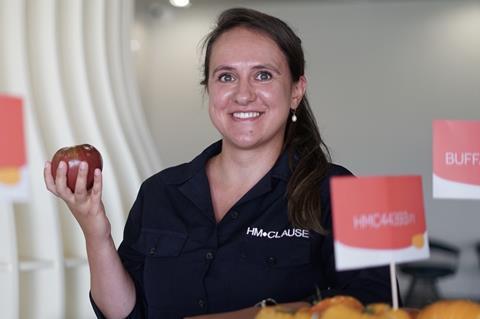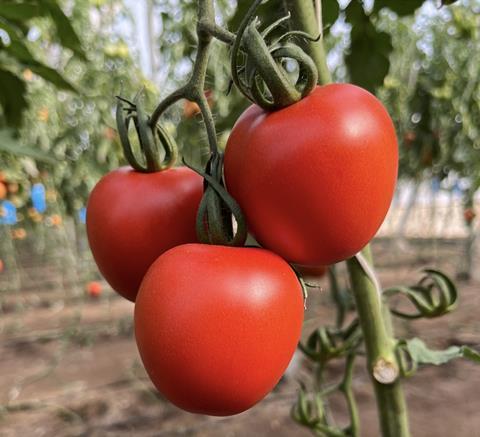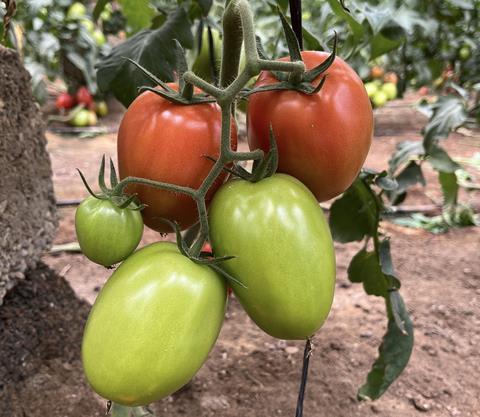HM Clause’s Katarzyna Grabka explains how the company is combining ToBRFV resistance with superior agronomic performance while adapting varieties to climate challenges and evolving market demands

Ahead of the Fruitnet Tomato Congress, which takes place on 11-12 November in Malaga, Spain, HM Clause’s tomato breeding coordinator Katarzyna Grabka talks to Fresh Focus Tomato about the fight against ToBRFV, adapting to climate challenges and the strength of the category.
What are the key recent developments at HM Clause?
Katarzyna Grabka: We are intensifying our efforts to develop ToBRFV-resistant varieties, but resistance alone is not our end goal. Our mission is to enhance profitability for growers and the entire value chain. To achieve this, we apply a rigorous selection process.
Currently, all our varieties – numbering in the hundreds – demonstrate resistance to the disease in internal screenings. As a professional company, we ensure that every commercial variety we release has been thoroughly tested by our local teams, with ToBRFV resistance fully validated under real growing conditions.
ToBRFV is, of course, a major talking point for the business. What has your long-term strategy been to deal with the virus?
KG: Since 2014, we’ve been actively working on resistance. A key milestone was achieved in 2017 through our Limagrain Vegetable Seeds patent, marking significant progress. Today, our Limagrain discovery programmes continue to work intensively to identify resistances against potentially emergent, more aggressive forms of this devastating virus.
Over the past year, we’ve successfully launched several varieties that have proven the strength and reliability of our resistance across diverse countries and growing conditions.
Notably, our cherry tomatoes – Intuitivo and Curioso – have become leading varieties in Mediterranean markets. New launches are underway, including saladette types like Freeman and Centinela, as well as the round variety Fleeming.
Today, every variety in our development pipeline carries ToBRFV resistance. It’s a non-negotiable standard. But resistance alone isn’t enough. We apply a strict selection process to ensure that only varieties with outstanding agronomic performance and fruit quality reach commercial release.

Tell us more about some of these new varieties…
KG: Let’s highlight Freeman, a ToBRFV-resistant variety perfectly suited for long cycles, offering consistent fruit size throughout the season. It delivers an ideal Brix-acid balance and a vibrant red colour, making it a standout in both quality and appearance. Grown in Spain and Morocco, Freeman’s excellent shelf-life ensures reliable distribution across Europe.
We can also spotlight Centinela, a large saladette variety tailored for local markets. With confirmed ToBRFV resistance, Centinela guarantees firmness and consistent quality throughout the supply chain. Currently produced in Spain, it’s available year-round, offering stability and performance for growers and retailers alike.
Aside from disease resistance, what other traits do your customers demand from your products?
KG: Our approach is tailored to the typology and destination market. We adapt our product profiles to the specific needs of each production and consumption region, ensuring alignment with local market expectations. Our selection process prioritises varieties that deliver profitability across the value chain, with a strong focus on flavour and yield.
In response to climate change, we’re also developing traits that enhance resilience to high temperatures and stress conditions – ensuring consistent performance in increasingly challenging environments.
Our specialty portfolio is a good example. The best sources of taste often come from old, traditional heirloom varieties. However, these are rarely produced at scale due to limitations in agronomic and fruit quality traits. My work focuses on blending heirloom genetics with modern breeding. The goal is to deliver varieties that excel in taste while offering practical traits like manageable plant architecture, uniform shape, good shelf-life, and high yield.
How is the tomato business positioned?
KG: Across Europe, the tomato market is gaining value as consumers increasingly seek superior taste and quality. This shift is driving demand for specialty large-size tomatoes like Marmande and Oxheart – loved by consumers, and highly profitable for both growers and retailers.
These varieties are thriving, especially in regions like France and Spain, where recent seasons have been particularly successful. Year after year, cultivated surface area continues to expand, reflecting strong market confidence and sustained consumer enthusiasm.

How does the current global environment affect a company like HM Clause?
KG: Geopolitical instability is already affecting our business and will likely continue to do so. To navigate this evolving landscape, we must remain agile and continuously adapt our processes.
Climate change is no longer a future concern; it’s a present reality. Water restrictions and unpredictable weather patterns are challenging growers across regions. In response, we’re developing varieties that address these issues directly. For example, our Adora tomato requires 40 per cent less water than standard varieties and shows strong tolerance to saline soils, making it a smart choice for water-stressed environments.
We are also screening under high-temperature conditions to identify varieties with improved heat set. In parallel, we are pursuing plant architecture innovations to address grower challenges related to profitability and labour efficiency.
What technological advancements are benefitting the tomato business?
KG: The tomato industry is undergoing rapid transformation, benefiting growers, streamlining supply chains and enhancing breeding efficiency. Agribusiness is increasingly embracing advanced technologies, including AI, to optimise traits related to production, logistics, and consumer satisfaction.
A prime example is our Adora tomato. Using a non-destructive machine, we measure the Brix level, colour, and size of each individual fruit – ensuring consistent, high-quality standards for consumers. This technology allows us to confidently stand behind our brand promise: one brand, one quality guarantee.



